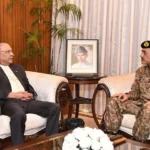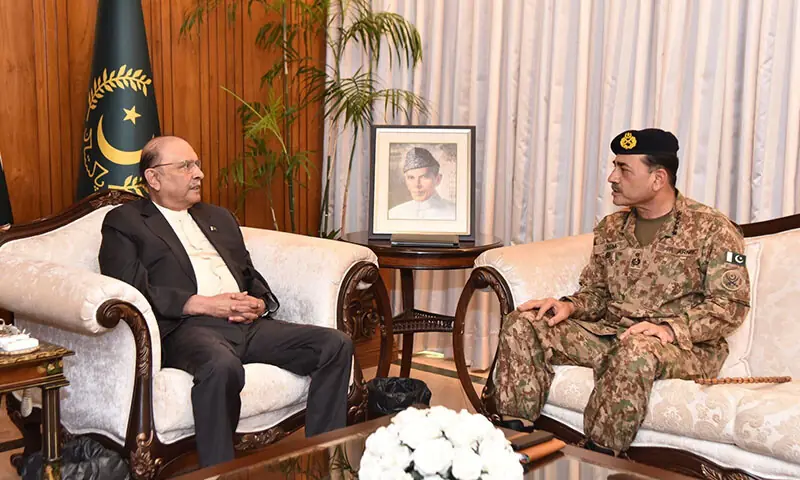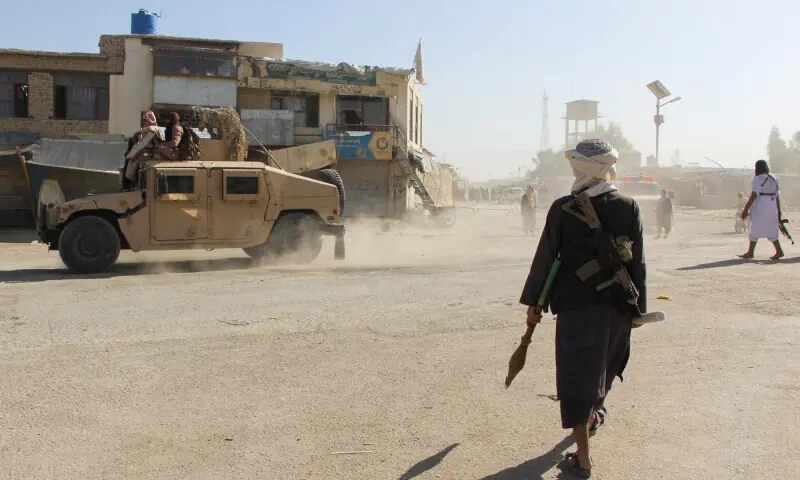Prime Minister Shehbaz Sharif on Tuesday formally unveiled the National Economic Transformation Plan 2024-29, called “Uraan Pakistan: Homegrown National Economic Plan”.
The five-year plan aims to address key economic challenges through a specific framework called the “Five E’s”: Exports; E-Pakistan; Equity and Empowerment; Environment, Food and Water Security; and Energy and Infrastructure.
Earlier in April, Prime Minister Shehbaz had called for the creation of a comprehensive five-year strategy to double the country’s exports and stressed the importance of a collaborative approach, asking the commerce ministry to design the export strategy in consultation with businessmen. and successful stakeholders.
The plan announcement ceremony was held in Islamabad and was attended by Finance Minister Muhammad Aurangzeb, Planning Minister Ahsan Iqbal and Deputy Prime Minister Ishaq Dar.
Addressing the event, Prime Minister Shehbaz praised the presentations of the above ministers. “The fact of the matter is that in the last nine months we negotiated enormous challenges [and] difficulties and thanks to the tireless efforts of the federal and provincial governments and our partners in prosperity and progress, we have been able to achieve macroeconomic stability.
“But this is just the beginning of a long journey that would involve sacrifice, blood and sweat to achieve economic growth and find our lost place among nations,” he added.
The prime minister said the above required everyone to come together to work together and move forward with “unity of thought and action.”
The prime minister explained the challenges his government faced on the economic front when it came to power and said the country was forced to look for another program with the International Monetary Fund (IMF).
He said it was a time to reflect on why the country had to resort to another IMF bailout, pointing to the losses of state-owned companies, the circular deficit and corruption.
Outlining how growth in the economy would be achieved, the prime minister said inputs would have to be made cheaper, investment encouraged and import restrictions removed to encourage competition, efficiency and export-led growth.
“Export-led growth is Pakistan’s latest saviour. It is necessary to earn dollars, something that is only possible through exports,” he said, adding that this was also the central axis of the new reform package.
The Prime Minister also highlighted the need to promote and expand the digital and technology sectors, particularly the use and adoption of artificial intelligence.
Chief Minister Shehbaz also said there was a need to create political harmony to boost privatization efforts to avoid losses and inefficiency in state-owned enterprises, pointing out the unsuccessful efforts to privatize the national airline.
“We are facing a setback in the privatization of PIA. The facts must be accepted. “There is no doubt that our team did everything possible and we are doing it again,” he said.
The prime minister said the government would have to aim for an annual investment target of $10 billion, adding that it was “easier said than done.” He said foreign investment was only possible by first facilitating local investment, adding that steps were being taken in this regard.
Earlier, Foreign Minister Ishaq Dar said “petty politics must be buried” if Pakistan wants to make progress.
“If you remember, we talked about an economic letter several times between 2013 and 2017, but it fell on deaf ears,” Dar said while addressing the ceremony.
He said Pakistan had to face huge losses and “Pakistan fell from 24th to 47th place among the largest economies.”
Dar said he believed Pakistan could still join the G-20 club of nations, adding that “the goal is very conveniently achievable as long as we remain on the right path.”
He added that everyone must take ownership of the economic roadmap.
Meanwhile, the Finance Minister summarized “the important macroeconomic progress made” in the last 12 to 14 months.
“We have to move towards growth, but it has to be sustainable growth, we cannot continue in cycles of boom and bust,” he stated. “Because we’ve been an import-based economy, as soon as we get above four percent, we have balance of payments problems, then we run back to the institution and say, ‘this will be the last funding program.’ .
“We need to move towards growth, under the leadership of Prime Minister Shehbaz, but on the basis of fundamental reforms that we have found elusive and that are imperative for sustained growth.”
He said the path to long-term prosperity justified local solutions, which is why Prime Minister Shehbaz established the National Reform Economic Committee in May. “That committee comprehensively reviewed the national economic plans, including the 13th five-year plan prepared by the Ministry of Planning and duly approved by the National Economic Council and the economic manifestos of various political parties.”
Aurangzeb explained the three main pillars of the plan: stimulating private investment, which was key to achieving more jobs, higher incomes and a lower cost of living through a more competitive economy.
He emphasized that the implementation of the measures was key to the plan, not just the planning. He noted that under Manmohan Singh as Prime Minister, India progressed but Pakistan did not in a comparable period of time.
The finance minister said the second pillar was to stimulate exports, a key mechanism for boosting productivity growth, and the third was to optimize public finances, which was critical for stability and sustained growth.
“There will be a separate fiscal policy unit that is in the process of being set up, which will report independently to the Ministry of Finance. So we are separating politics from revenue.
“This tax policy unit will be managed by people from the public and private sector so that we can implement policy continuity. Tax leakages will be addressed through the use of data analytics and the privatization process will be accelerated.”
Explaining the results of the plan, he said they were achieving sustainable GDP growth of 6 percent by 2028, creating one million additional jobs annually, securing additional private investment of $10 billion per year and achieving an export target. of $60 billion by fiscal year 2028.
Aurangzeb emphasized that “there is no lack of policy prescriptions in Pakistan; We’ve known the what and the why for a long time, we just don’t do it. This time the plan is accompanied by a comprehensive implementation mechanism.”
Today, Information Minister Attaullah Tarar said the reform package would significantly improve the lives of citizens, stimulate growth and strengthen the economy.
Tarar said the economy had moved from the brink of default to stability and was now on the path to progress, highlighting improvements in all economic indicators.
He described the reform-driven plan as centered on a ‘Made in Pakistan’ approach and highlighted its vital role in fostering economic growth and bringing positive changes for the people of Pakistan.
Tarar said the economic reform agenda was designed to accelerate the country’s development and ensure the prosperity of its citizens.









